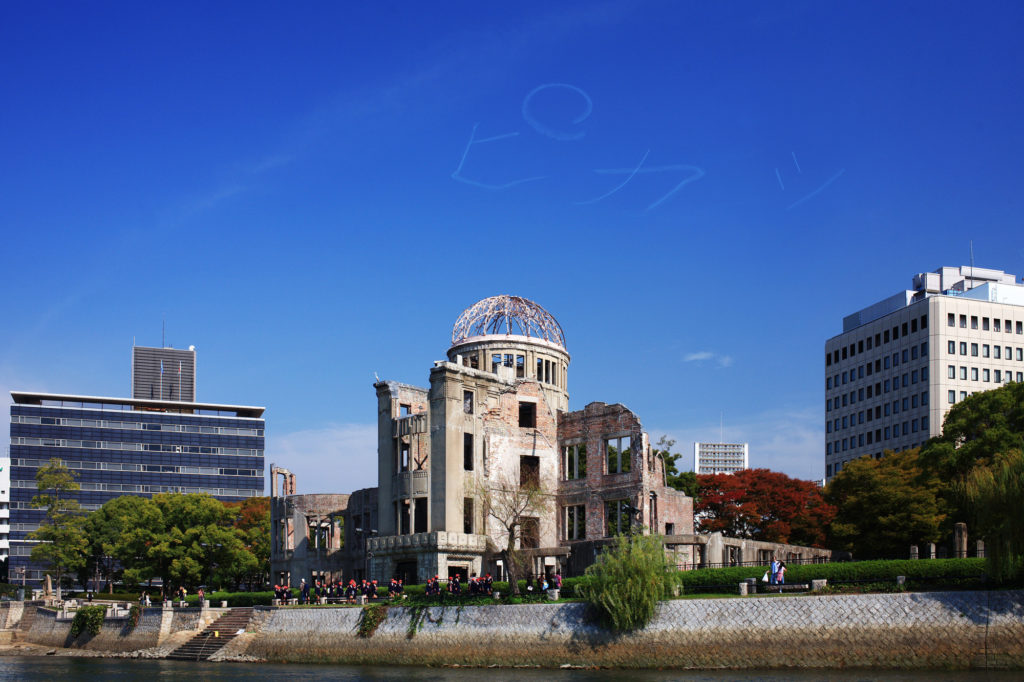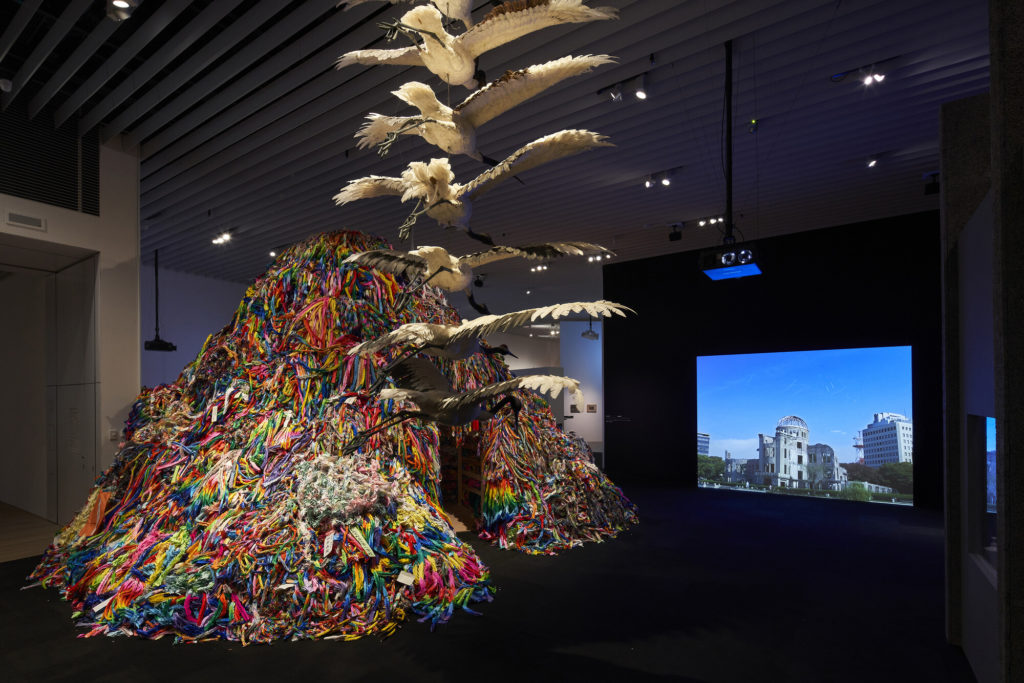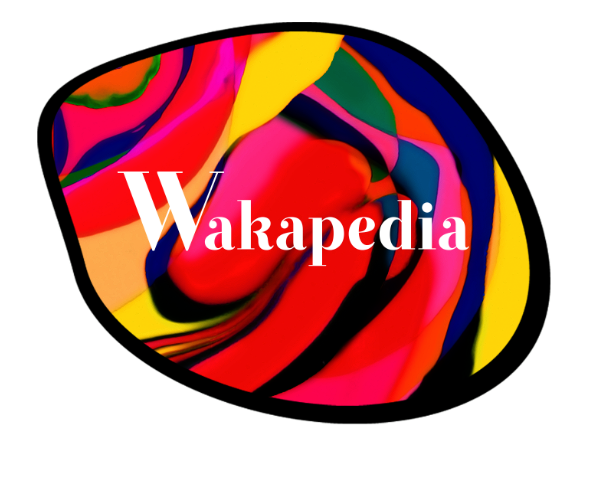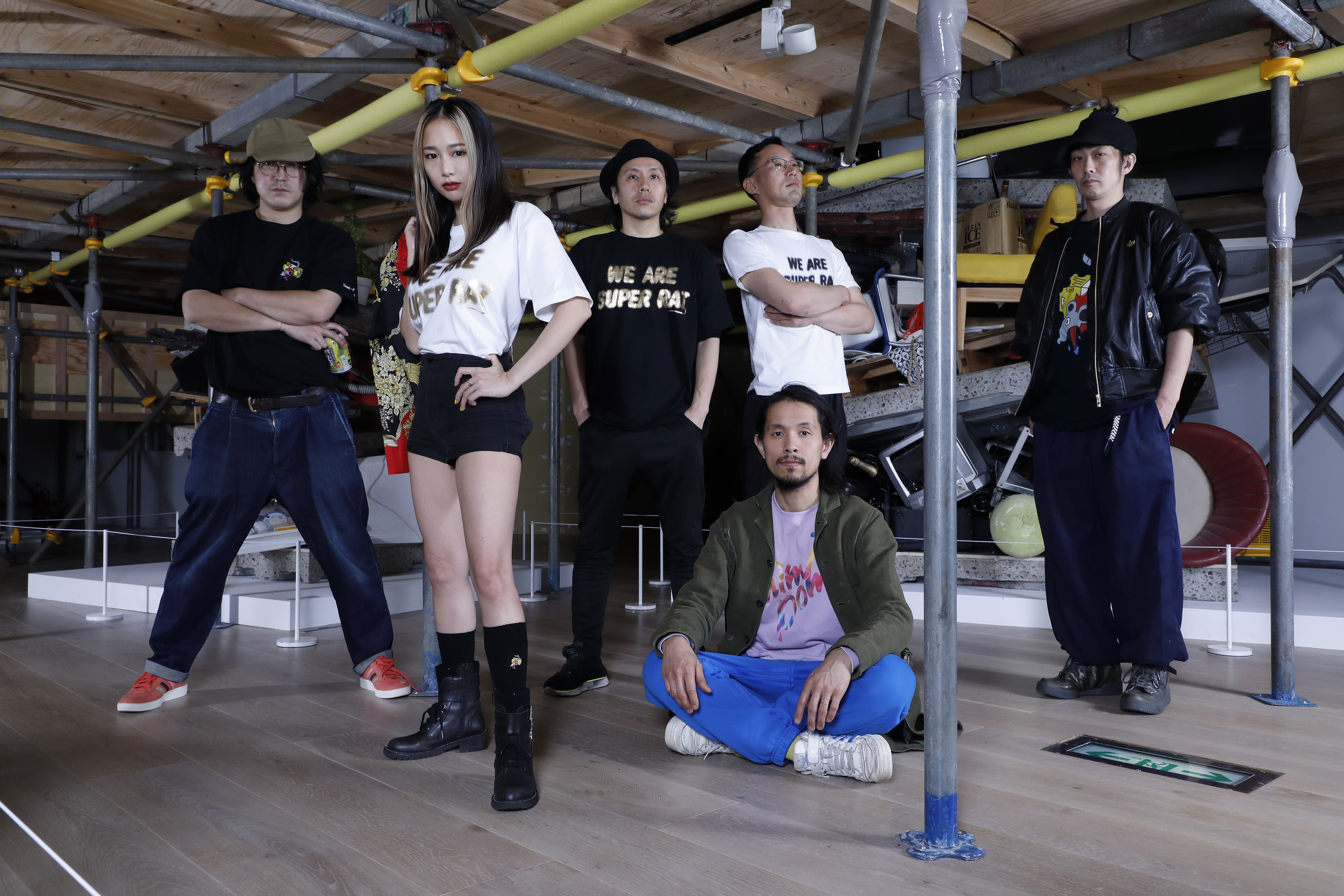Happy Spring, a retrospective exhibition by the Japanese artists’ collective Chim ↑ Pom at the Mori Art Museum in Tokyo
In the heart of Tokyo‘s futuristic Roppongi Hills, located on the 53rd floor, the Mori Art Museum features an innovative and originally-curated contemporary art exhibition with works by leading Japanese and international artists. It is here that, until May 29, 2022, the most radical of the Japanese artistic collectives, Chim ↑ Pom, presents theirfirst major retrospective.
Born in Tokyo in 2005 and made up of 6 artists, the Chim ↑ Pom collective is renowned for its politically provocative installations and performances with a powerful social message.
The first time we, theWakapedia team, discovered their work was in 2018 at the MAXXI in Rome. Being very sensitive to the subject of contemporary Japanese artists – who for the most part remain under-represented or unknown outside of Japan – we were thrilled to see that a prominent Italian museum finally gave Chim ↑ Pom the opportunity to exhibit their work within Europe.
So of course, we also did not want to miss the great exhibition at the Mori Art Museum. Titled “Happy Spring”, the collective artists wish to convey a message of hope: Spring – the season of rebirth – is coming after the hard times of the pandemic and our power of imagination will triumph over adversity.
Provocative and ironic, serious yet funny, the unconventional works of Chim ↑ Pom stimulate our imagination whilst addressing various issues in Japanese society – truths which are universally acknowledged, and comprehensible world-wide. Their work helps us glimpsea better future, in these seemingly never-ending, unstable times.

Chim↑Pom《ヒロシマの空をピカッとさせる》2009年 Courtesy:ANOMALY and MUJIN-TO Production(東京)撮影:Cactus Nakao
From Pikachu to Hiroshima,contemptuousand highly topical works
The exhibition brings together 150 works created over a 17-year career and is divided based on various controversial issues: from the uncontrolled urban development of large cities like Tokyo, with the resulting consequences of consumerism, poverty, pandemics etc. to the influence of mass media to the concepts of frontier and public space.
Despite their work being inspired by major tragic events and delicate moments in Japanese history, they are often treated with a touch of humor and irony.
For instance, when they chartered a private jet in 2008, flew it above Hiroshimaand wrote a Japanese onomatopoeic “PIKA”(widely used in comics), in smoke in the sky to describe the blinding explosion of the atomic bomb during World War II. This work was designed to sensitize a sector of society known as HEIWA BOKE, a nickname used for a fraction of youth who maintain a naivety and indifference to real societal problems.

Chim↑Pom 展示風景:「Chim↑Pom展:ハッピースプリング」森美術館(東京)2022年 撮影:森田兼次 画像提供:森美術館
Another work linked to this massacre struck us deeply due to its contrast between its heart-breaking story, and its simultaneously colorful, joyful and hopeful approach. ”PAVILION” (2013/2022) is a large pyramid-shaped installation, made up of multi-colored orizuru (origami representing crane birds), which traditionally symbolizes good luck. The idea comes from the story of a young Japanese girl, who suffered from leukemia due to the radiation produced from the Hiroshima atomic bombing. This young girl spent her time making orizuru in the hopes of healing and sending a message of peace. Since then, the city of Hiroshima receives many orizurus from all over the world every year.
One of Chim ↑ Pom‘s members, Ellie, unfolds these orizurus one by one and leaves it up to the exhibition’s visitors to reconstruct them in order to express their own will for peace. The newly-folded origami is then sent back to Hiroshima, thus symbolizing the vicious cycle of building and destroying universal peace, of which we all play a conscious or unconscious part in.
More recently, the Fukushima tragedy prompted Chim ↑ Pom to envision a strong and conceptual artistic intervention. “Don’t Follow the Wind” is an exhibition conceived in the radioactive no-entry zone of Fukushima, evacuated following the earthquake and tsunami that caused a nuclear disaster in 2011. The amazing thing about it is that it is a “ghost exhibition” as it is not visible to anyone and will only open when the area is no longer radioactive.
In addition, one month after the tragedy, members of the collective also went to Fukushima, dressed in full anti-contamination suits to document through video the creation of an adaptation of the Japanese flag; they spray-painted three red wings around the symbol of the Rising Sun, thus transforming it into a warning symbol against the consequences of radiation.
Other works by Chim ↑ Pom include the “Super Rat”, a nickname given to a new breed of super resistant rats to rodent control products – a breed that sounds almost post-apocalyptic but is in fact very real! Moving more along the Pop culture line, in 2006, Chim ↑ Pom stuffed some of these infamous rodents and painted them to look like Pokemon Pikachu, before exhibiting them in extravagant scenes and positions. “Super Rat” enters a much more comedic artistic style, creating childish and amusing mascots that offer numerous interpretations. On the one hand, they warn about the proliferation of this much hated species in large cities like Tokyo (which has over 200,000 rats out of 37 million inhabitants!); while on the other hand this animal is a positive symbol of the presence of nature in an urban setting; or perhaps, due to its resistance, they can also be compared to the resistance of Japanese people who have learned how to survive and even thrive despite pandemics and catastrophes galore.
In the chaotic and distorted universe of Chim ↑ Pom, the contradictions and traditions of Japanese culture are mixed up and reimagined in a provocative and humorous way. By masterfully dosing irony and provocation, fun and criticism, the collective invites us to reflect on sensitive and controversial issues, evading the censorship of a still modest and conservative part of Japanese society.
An exhibition that we highly recommend visiting if you are passing through Tokyo this spring and a collective that we recommend following in their exhibitions abroad!
Edited by: Wakapedia Japanese Team







